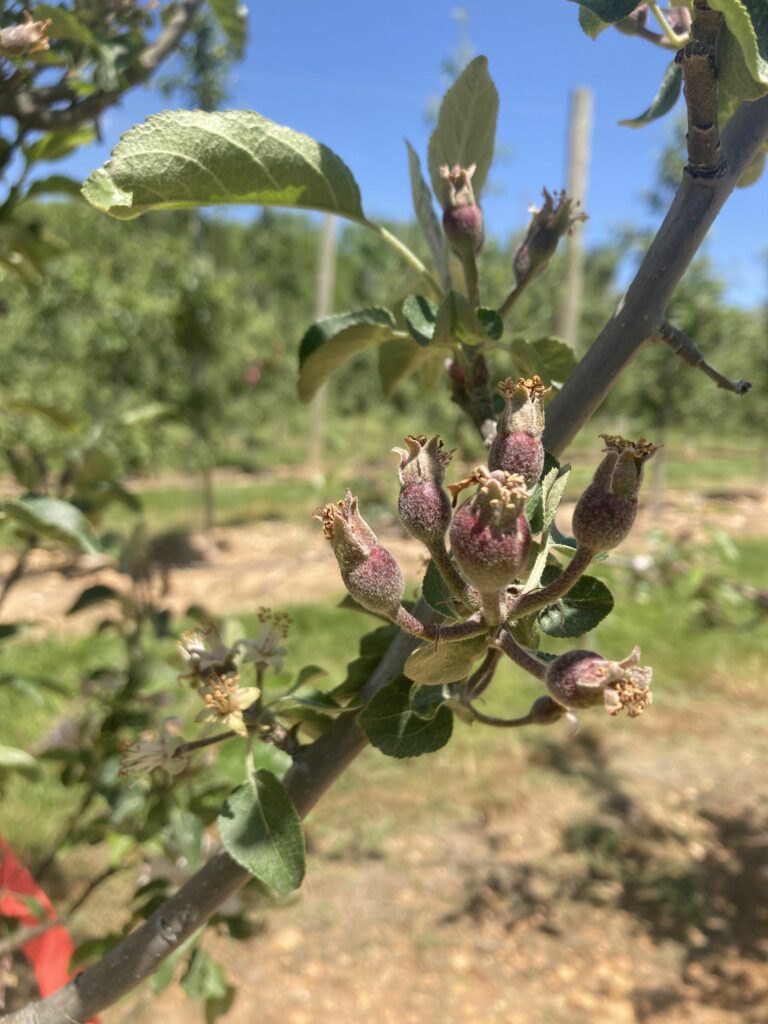Horticultural Update (04/24/23)
go.ncsu.edu/readext?931822
en Español / em Português
El inglés es el idioma de control de esta página. En la medida en que haya algún conflicto entre la traducción al inglés y la traducción, el inglés prevalece.
Al hacer clic en el enlace de traducción se activa un servicio de traducción gratuito para convertir la página al español. Al igual que con cualquier traducción por Internet, la conversión no es sensible al contexto y puede que no traduzca el texto en su significado original. NC State Extension no garantiza la exactitud del texto traducido. Por favor, tenga en cuenta que algunas aplicaciones y/o servicios pueden no funcionar como se espera cuando se traducen.
Português
Inglês é o idioma de controle desta página. Na medida que haja algum conflito entre o texto original em Inglês e a tradução, o Inglês prevalece.
Ao clicar no link de tradução, um serviço gratuito de tradução será ativado para converter a página para o Português. Como em qualquer tradução pela internet, a conversão não é sensivel ao contexto e pode não ocorrer a tradução para o significado orginal. O serviço de Extensão da Carolina do Norte (NC State Extension) não garante a exatidão do texto traduzido. Por favor, observe que algumas funções ou serviços podem não funcionar como esperado após a tradução.
English
English is the controlling language of this page. To the extent there is any conflict between the English text and the translation, English controls.
Clicking on the translation link activates a free translation service to convert the page to Spanish. As with any Internet translation, the conversion is not context-sensitive and may not translate the text to its original meaning. NC State Extension does not guarantee the accuracy of the translated text. Please note that some applications and/or services may not function as expected when translated.
Collapse ▲
CrimsonCrisp fruit set on 4.24.23. While fruit size is appropriate for chemical thinning across many varieties, cool weather this week is complicating management decisions.
In our region, February was one of the warmest on record and promoted early bud development. Since March 1st, we’ve observed up to 10 nights with sub-freezing temperatures (tomorrow morning may make 11). Seven of these dates occurred between March 14th to March 21st, when trees ranged from green tip to pink bud stage. During this interval, two advective freezes (large cold air mass with high winds) occurred and were followed by a series of radiational frosts. Many sites were in the low 20’s for multiple nights during this interval.
While it is difficult to accurately summarize the impact of this series of cold events on the 2023 southeastern apple crop, here is my attempt: one size does not fit all. Some locations observed significant injury. Others made it through with full cropping potential. Sub-lethal injury is prevalent in many orchards (spur leaf damage, frost rings, etc.). Additionally, the heavy crop in 2022 resulted in poor return bloom of some cultivars (Golden Delicious, Fuji, etc.).
It is good that trees cannot read critical temperature charts. Despite all of this adversity, there are still orchards that have an excessive crop load. There was an excellent thinning window last week (moderately high temperatures and a mild to moderate carbon balance deficit) and some took advantage of this. However, some orchards/cultivars did not have adequate fruit size for post bloom thinner applications… or initial fruit set was still unsettled.
Thinning in cool weather?
Based on the forecast, cool weather and rain is predicted over the next week. High temperatures less than 65° F are generally considered too cold for a successful application. Poor chemical uptake and thinning activity are observed in these situations.
Please consider the following:
- 6-benzyladenine based compounds (MaxCel®; Exilis® Plus; Exilis® 9.5 SC, etc.) have poor thinning activity when daytime high temperatures are less than 68 °F.
- NAA (Fruitone L®; PoMaxaTM; RefineTM, etc.) has some thinning activity at cooler temperatures. However, applying NAA at suboptimal temperatures increases the chance of pygmy (a.k.a. “nubbins” or “mummies”) fruit development.
- Carbaryl has some thinning activity at suboptimal temperatures. However, carbaryl alone is unlikely to do a complete thinning job when on moderate/difficult-to-thin varieties.
- Ethephon (Etherel; Ethephon 2; MotivateTM, etc.) has the reputation of being an erratic thinner. This compound is very temperature sensitive. Applying ethephon at cool temperatures may result in limited activity. As temperature increases, so does the thinning response.
The best course of action may be to wait until favorable weather conditions are observed. This will not occur for another 7 to 10 days. There may be some orchards that will receive their 1st application of chemical thinner when fruit size exceeds 15 mm in diameter. While thinning large fruit is challenging and may require use of different products, it can be done successfully. I will provide a crop load management update early next week.


